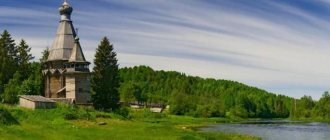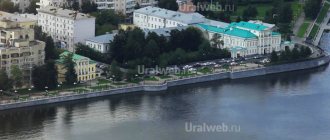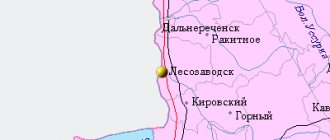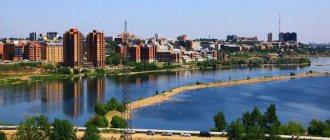Ilizarov Center Museum
Ilizarov Center Museum
Mound
The Ilizarov Center Museum is the first museum of traumatology and orthopedics in Russia. It was opened in Kurgan in 1993. The office of orthopedic surgeon Gavriil Ilizarov, who patented a device for merging and stretching bones, was recreated here. In the office you can see documents about the doctor’s inventions, video chronicles and photographs of surgical operations.
The museum has a makeshift laboratory and operating room where guests can fix the fake bones themselves. In the halls of the museum you are allowed to hold a real surgical drill and other instruments of traumatologists in your hands. On special screens, visitors are shown the structure of the human body. Such a program is called a multimedia anatomical atlas.
Museum guests are offered excursions around the park of the Ilizarov Center: in the recreational area there is a monument to the surgeon-inventor, historical installations “They Serve Science” and “Brumel’s Gate”. Meetings with famous Russian doctors are also held here.
Popular message topics
- Sequoia Tree
The giant pine or sequoia is the largest tree on the planet. Standing next to this tree, a person seems like a dwarf. In ancient times, redwood trees were distributed throughout the northern hemisphere. - Brown algae
The flora of the seas and oceans is extremely diverse! The largest percentage of the biomass of aquatic flora is occupied by algae. According to rough estimates by scientists, more than 100 thousand species of algae have been discovered and studied so far. - Moscow
Moscow is the central city of our country, which is the capital of Russia. This city is not only the capital of Europe, but of the whole world. All tourists strive to get to Moscow in order to see all the beauty that is in our city.
Aviation Museum
Aviation Museum
Mound
The Kurgan Aviation Museum was founded in 1985. Here they talk about the history of aviation in the Trans-Ural region from 1912 to 2000. Among the exhibits are documents, photographs, awards and pilot uniforms.
In total, the exhibition of aviation equipment includes 15 aircraft, including various fighters: interceptors, bombers, attack aircraft. Also presented are models of aircraft on which employees of defense companies worked: Aviakhim, Osaviakhim, DOSAAF, ROSTO. In the fuselage of the Il-14T transport aircraft there is an exhibition of crew uniforms and equipment. During the sightseeing tour, visitors are told how the main types of aircraft are constructed and how experienced aviators fly the planes.
What did archaeologists manage to establish?
The first mounds date back to the Neolithic period. The shape of earthen mounds is usually spherical; the base can be square, round, or oval. The largest mounds found reach one hundred meters in diameter at the base; visually they look like elongated earthen mounds. The interior spaces were equipped in different ways: these could be stone crypts, earthen chambers, caves, wooden log houses. There are mounds formed from thousands of individual mounds.
Mounds were intended not only for burials. In addition to the function of “observation hills”, in ancient times the mounds served as storerooms, churches, and various public spaces. Archaeologists managed to find mounds without signs of burials and without the presence of altars, which indicates their domestic purpose.
Made of stone without the use of fastening mortar and sprinkled with earth on top, the structure was easy to construct; one could live inside or store a supply of vegetables, grains, and pickles.
House of Decembrist Rosen
House of Decembrist Rosen
Mound
The estate, which today houses the house of the Decembrist Rosen, was one of the largest in Kurgan. It was built at the end of the 18th century. Baron Andrei von Rosen lived here with his family from 1832 to 1838. The estate consisted of a house with a mezzanine, a bathhouse and laundry, a stable and a barn. Rosen himself planted flower beds in the garden, planted ornamental and fruit crops, and then distributed seedlings and seeds to the townspeople.
The poet Vasily Zhukovsky, as well as former Decembrist convicts, stayed in Rosen’s house. In 1838, the baron left to serve in the Caucasus, and for some time exiled participants in the Polish uprising lived here. After 30 years, the estate came into city ownership. Over the years, a hospital and a parish school, a public meeting and other institutions were located here.
In 1914, a room with a stage was added to the house, which has survived to this day. During Soviet times, the house was occupied by the troupe of the Operetta Theater, and later by the library and the city council. Today, students from a children's art school study here.
How to get there
There is an airport of the same name in Kurgan, which accepts flights from only one city - Moscow. There is one flight per day from the capital, the flight lasts almost three hours. Ticket price: from 8,000 rubles.
By train you can get to Kurgan from Moscow, Yekaterinburg, St. Petersburg, Novosibirsk, Belgorod, Petropavlovsk, Irkutsk, Omsk, Chelyabinsk, etc. The trip from Moscow will last 33–35 hours. Ticket price: from 1900 rubles. You can get from St. Petersburg to Kurgan by train in 46–47 hours. Ticket prices start from 4,000 rubles.
The station building was built at the end of the 19th century, but after numerous reconstructions it bears little resemblance to the construction of those years
Bus routes to Kurgan depart from Yekaterinburg, Nizhnevartovsk, Nizhny Tagil, Perm, Surgut, Tobolsk, Tyumen, Khanty-Mansiysk, Chelyabinsk and Shadrinsk. You can only get from Moscow and St. Petersburg by private car; buses do not go to Kurgan. A trip from St. Petersburg by personal vehicle will take about 30 hours, not including sleep. You will have to overcome 2700 kilometers. From the capital to Kurgan the distance is 2000 kilometers, which can be covered in 22 hours. You should travel along the M7, M5 and P254 highways.
Kurgan Regional Museum of Local Lore
Kurgan Regional Museum of Local Lore
Mound
Kurgan Museum of Local Lore is the first and largest museum in the region. The collection began to be assembled back in 1920. After 30 years, the exhibits were placed in the former Church of St. Alexander Nevsky. The exhibition included artifacts found during the excavations of Tsarev Settlement—that’s how the Kurgan was called before 1738. Among them are stone sacrificial slabs, a military belt set and tools.
In 1975, a branch was opened at the museum - the House-Museum of the Decembrists. It is located in a building built at the end of the 18th century, where the Decembrist Mikhail Naryshkin and his family lived from 1833 to 1837. Later, all the exiled Decembrists met in this house. During the restoration in 1972, the owners’ rooms, living room, dining room and library were restored according to letters from Naryshkin’s wife. Here you can see furniture made of mahogany and Karelian birch, as well as antique interior items.
The local history museum also includes the House-Museum of V.K. Kuchelbecker. It was opened on the site where the Decembrist Wilhelm Kuchelbecker lived from September 1845 to March 1846. The house was completely restored according to the model of that time.
In 2006, another branch of the local history museum opened - the Museum of City History. Its exhibition is located in a merchant mansion, where outbuildings and a house in the style of Russian classicism have been preserved. In the museum you can learn how Kurgan developed - from the founding of the settlement until 1917. Visitors are told about the significance of the district town in the history of Siberia.
A few words about Kurgan
Kurgan is a Russian city located on the banks of the Tobol River. The city is located in the Ural Federal District and plays the role of the administrative center of the Kurgan region. The area of the city is slightly less than 400 square kilometers. About 318 thousand people live here.
Kurgan is no longer the Urals, but also not Siberia; it is located in an area that has received the precise, beautiful name “Trans-Urals”
Story
The founder of the city is the peasant Timofey Nevezhin, who was the first to set up his hut on the Tobol River, not far from the ancient mounds. Later, other settlers began to come here from the central part of the country. So, in 1679, the first settlement was formed on the site of modern Kurgan. They called it the Tsar's Settlement. In 1695, the settlement moved down the river and changed its name to Tsarekurganskaya Sloboda. Then it became a military fortress, and in 1782, by decree of Catherine II, the settlement acquired the status of a city, and with it another name - Kurgan. Throughout the 19th century, the settlement played the role of the administrative center of the Kurgan district, part of the Tobolsk province. At the same time, the settlement begins to expand, the number of residents increases, hospitals, educational institutions, shops, libraries are opened, a railway and churches are built.
In general, the first settlements on the site of the Kurgan appeared about a thousand years BC. Once upon a time, the leader of the Scythian-Sarmatian tribe was buried here, however, unfortunately, all the ancient graves in these places have long been plundered
The city acquired its modern appearance in the post-war period. In the middle of the twentieth century, the famous center of G. A. Ilizarov opened here, in addition, new residential buildings were erected in the settlement, factories and an aviation school were opened. In 1998, the city acquired a flag and coat of arms, which are still in use today. Today Kurgan is a relatively large industrial center of Russia, as well as an economic, transport, cultural, business and trading city of the Urals.
Kurgan Regional Art Museum
Kurgan Regional Art Museum named after. G.A...
Mound
Kurgan Art Museum was founded in 1982. Paintings by Russian painters of the 20th and early 21st centuries are stored here: Yulia Razumovskaya and Grigory Shegal, Leonard Turzhansky and Pyotr Konchalovsky, Nikolai Dormidontov, Alexander Deineka. The museum displays the largest collection of watercolors in Russia - more than 1,500 sheets by Arthur Fonvizin, Lev Bruni, Vasily Zvontsov and other artists.
In the arts and crafts section, visitors can see works of traditional crafts of Russia and artistic crafts of the Trans-Ural region - weaving, embroidery, ceramic and glass products, cast iron objects made using the Kasli casting technique. Also here are exhibits of Russian culture of the 18th - early 20th centuries: icons, early printed and handwritten books, engravings.
Visitors are invited to take a walk along the tourist routes: “Art Museum and City Museums” and “Art Museum and Historical Part of the City”. In addition, the museum often organizes traveling exhibitions. One of them, “Kurgan Artists,” talks about the visual traditions of the Trans-Urals.
Automobile highways
Federal highways pass through Kurgan:
- P354 is a federal highway with a total length of 372 km. The route originates in Yekaterinburg and passes through Tyumen, Chelyabinsk, Shadrinsk, Yalutorovsk. The final point of the route is Kurgan. The road surface of the route is asphalt concrete.
- P254 “Irtysh” is a highway that has the status of an object of federal significance. The total length of the route is 1,528 km. The road passes through the following regions: Kurgan region, Chelyabinsk region, Novosibirsk region, Omsk region, North Kazakhstan region. It is part of the European route E30 and the Asian route AH6. The road surface of the route is gravel and asphalt concrete.
- E30 is a European route that runs from the Irish city of Cork and passes through Berlin, Rotterdam, London, Omsk, Chelyabinsk, Warsaw. The total length of the highway is 5,800 km. It is part of the A12 motorway.
Kurgan State Drama Theater
Kurgan Drama Theater
Mound
The history of the Kurgan Drama Theater began in 1943. The first rehearsals took place on the stage of a theater in the neighboring city of Shadrinsk. The artistic directors were Konstantin Stepanov-Kolosov and Alexander Kanin. Later, the troupe moved to Kurgan, where they were given the building of the former Alexander Girls' Gymnasium. In the spring of 1953, the regional theater moved to the former People's House, which was specially restored for artists.
For the opening of the new building, the actors prepared the play “Jackals” based on the play by Anatoly Yakobson. From 1956 to 1965, the theater was led by Honored Artist of the RSFSR Lazar Meyerson. The audience's favorite productions were his “Egor Bulychev and Others,” “Khanuma” and “Ermak.” Famous actors also came here to play: Georgy Menglet and Yuri Yakovlev, Andrei Mironov and Vera Vasilyeva, Yuri Solomin and Andrei Myagkov.
Today, the Kurgan Drama Theater is reviving the forgotten traditions of Russian provincial theater. On its stage you can see actors' benefit performances, comedies, musicals and productions by modern directors: Victor Antipin, Alexander Gorban, Daniil Beznosov, Dmitry Akrish and others.
Religious composition
Mighty Russia combines many religious movements. Kurgan, as a typical Russian city, is also replete with religious movements. Old Believers, Catholics, Protestants, Islamists, and Christians live here. There are some fans of Judaism, but these people are very few. There are many churches, temples, and even its own Muslim mosque. The number of Orthodox churches in the city is about 10, and there is a special prayer house for Old Believers. There are also places for worshiping the Lord, adapted for Baptists and Adventists.
Population diversity
Since 2007, the birth rate in Kurgan and the region has increased and the mortality rate has decreased. Now more than 326,000 people live in the city, a third of which are children and still disabled youth. According to statistics, there are much fewer male residents than female residents - 149.5 and 184 thousand people, respectively.
Multinational population:
- Russians;
- Ukrainians;
- Belarusians;
- other nationalities and peoples.
Young people from Kurgan and nearby towns are patriotic, get an education and want to achieve a lot. Guys and girls have real views on the world, they freely choose their profession and lifestyle. The administration is committed to ensuring the healthy development of the population. In the Trans-Ural region, sports complexes and a children's and youth center have been built, and work is constantly carried out with students.
The labor exchange provides jobs to the population immediately after reaching adulthood. Although some teenagers can receive a salary on the same basis as their parents, making their contribution to the family budget. Interesting fact: emigration of the population has decreased recently - in 2010, 11 thousand residents left, and in 2015 - only 8,000.
Workplaces
The machine-building industry is developed in Kurgan. The factories produce URAL, KAMAZ, ZIL, GAZ trucks, and BMP military vehicles. They also produce buses and heavy equipment.
Residents of the city and region receive jobs at various enterprises:
- Kurganpribor;
- Electromechanical Plant;
- Kurganselmash;
- trade and "Crimea";
- stores “Central Grocery Store”, “Zarya”, “Zvezdny”;
- Shopping centers "HyperCity" and "Pushkinsky".
Factories are constantly short of mechanics and turners, so professionals with technical specialties are valued in Kurgan. Women are most often employed in trade and entertainment centers. There are nine supermarkets and more than 30 shopping centers with children's playrooms, cafes, and bowling alleys for city residents.
Climatic conditions
The climate in Kurgan is continental, but heat lovers will find it uncomfortable here. The region has short summers and harsh winters. Snowfalls continue for six months, the average temperature in winter drops to -20 degrees, and on especially cold days it reaches -40. In summer it is no higher than +20, sharp changes are observed. After prolonged heat, severe cold snaps may occur, and vice versa.
There is a wind season in Kurgan , starting in March and lasting almost two months. Due to the unfortunate geographical position, the air stagnates over the area; even eastern currents cannot clear it. Although the city is surrounded by coniferous and birch forests, the atmosphere in it is almost three times dirtier than in neighboring areas.
Most enterprises have switched to natural gas, so they emit fewer harmful substances into the air. There are few roads in the region, their traffic capacity is low, and there are quite a lot of cars.
There are many environmental problems in Kurgan. The Tobol has long become a sewer, and the Black River is also polluted. Local residents scatter garbage on beaches and lakes; spring cleanup days do not allow them to be completely removed.
The environment is deteriorating not only because of the factories; the district administration and city government practically do not care about the cleanliness of the area.







